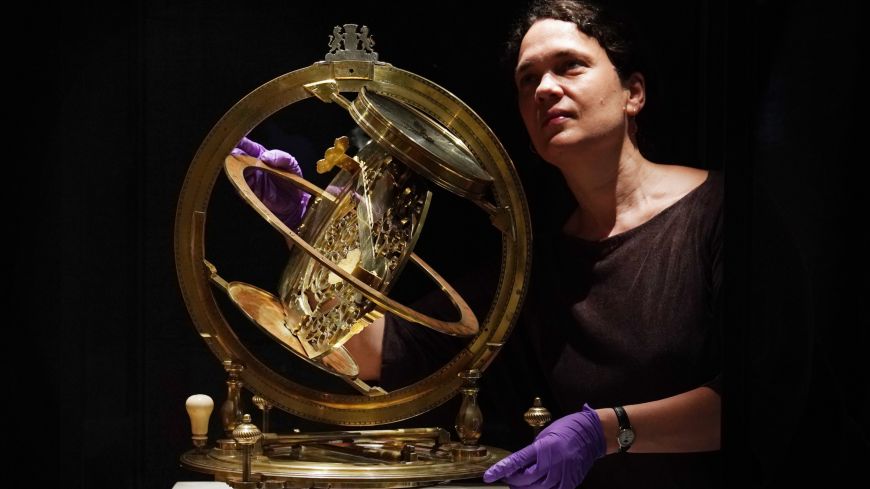
National Museums Scotland has announced the acquisition of an ornate early 18th-century sundial, described as being “of exceptional precision and design”.
When the Ilay Glynne dial was made, around 1715, it provided the most accurate means of setting clocks available at the time by measuring local time from the Sun.
It could be used at any latitude, and its form models the celestial sphere, showing the Sun’s apparent motion around the Earth.
The acquisition of the dial, which has important connections to post-Union Scotland, has been supported by the National Heritage Memorial Fund and Art Fund. The sundial is now on display at the National Museum of Scotland on Chambers Street.
Edinburgh has a number of horological and time-keeping attractions. Crowds gather each day to watch the one o’clock gun fired from Edinburgh Castle. There is also the 19th century timeball on the Nelson Monument used to signal the correct time to ships in the Firth of Forth, the elaborate Floral Clock in West Princes Street Garden, and the Balmoral Hotel Clock Tower which, by tradition, runs 3 minutes fast for the benefit of those taking a train from the adjacent Waverley Station.
History of the Ilay Glynne Sundial
The NMS’s new acquisition is signed by Richard Glynne (1681-1755), a successful and well-regarded maker of mathematical instruments and a member of the Clockmakers’ Company.
In his business, skills and innovations, Glynne was closely integrated with a growing community of British instrument makers and produced instruments of outstanding quality, of which this dial is the most important surviving example.
The sundial was originally commissioned by and belonged to Archibald Campbell, Earl of Ilay and later 3rd Duke of Argyll (1682-1761). Ilay was an influential figure in post-Union Scotland. He had control over royal patronage in Scotland, and managed Scottish affairs, making him the most politically powerful figure in the first half of the 18th century. As founder and the first governor of the Royal Bank of Scotland, his image used to appear on all RBS banknotes, and still appears on the £100 note today.
His patronage helped create the fertile culture of the Scottish Enlightenment. He supported philosopher Francis Hutcheson, chemist Joseph Black, astronomer Alexander Wilson, poet Allan Ramsay, among other pioneering figures of 18th-century Scottish culture.
The dial is of a type first made for figures such as Peter I of Russia and Queen Anne’s consort, Prince George of Denmark, suggesting Ilay commissioned it from Glynne as a projection of his reputation as a nobleman of wealth and status.
A large brass and silvered brass instrument, it is surmounted with the Ilay coat of arms, with leopard supporters, coronet and motto, and the central plate is decorated with the monogram ‘AC’, for Archibald Campbell, beneath an earl’s coronet.
Dr Rebekah Higgitt, Principal Curator of Science at National Museums Scotland, said:
“We’re delighted to be able to acquire the spectacular Ilay Glynne dial and hugely grateful to the funders who have made it possible. It is an addition which reflects the breadth of our collections, being at once a significant scientific instrument, an object of great beauty and one with strong connections to key developments in Scotland’s history.”
Jenny Waldman, Director, Art Fund called the sundial “stunning… The precision and detail of the craftsmanship is exquisite, a true work of art.”
Dr Simon Thurley, Chair of the National Heritage Memorial Fund, added:
“Not only is it an exquisite instrument, but its provenance offers an opportunity to explore important stories about scientific, intellectual and cultural currents that saw the birth of the Scottish Enlightenment.”
The dial has undergone extensive cleaning and conservation work, and is now on permanent display in the Spirit of the Age gallery in the National Museum of Scotland. Admission is free.

